Watermelon (Citrullus lanatus), a sweet and hydrating summer fruit, often steals the spotlight with its vibrant red flesh. But did you know the peel, typically thrown away, holds incredible benefits for your health, home, and garden?
Originating in Africa, watermelon peels are rich in essential nutrients, making them a valuable resource you shouldn’t ignore. From promoting better health to nurturing your garden naturally, watermelon peels offer a world of possibilities.
Health Benefits of Watermelon Peels
1. Packed with Essential Nutrients
Watermelon peels are loaded with vitamins A, B6, and C, minerals like potassium, and antioxidants. Their nutrient profile supports various bodily functions, including energy production and immune health.
100 grams of watermelon peel provides approximately 12 calories, 0.4 grams of fiber, and 8–10 mg of vitamin C.
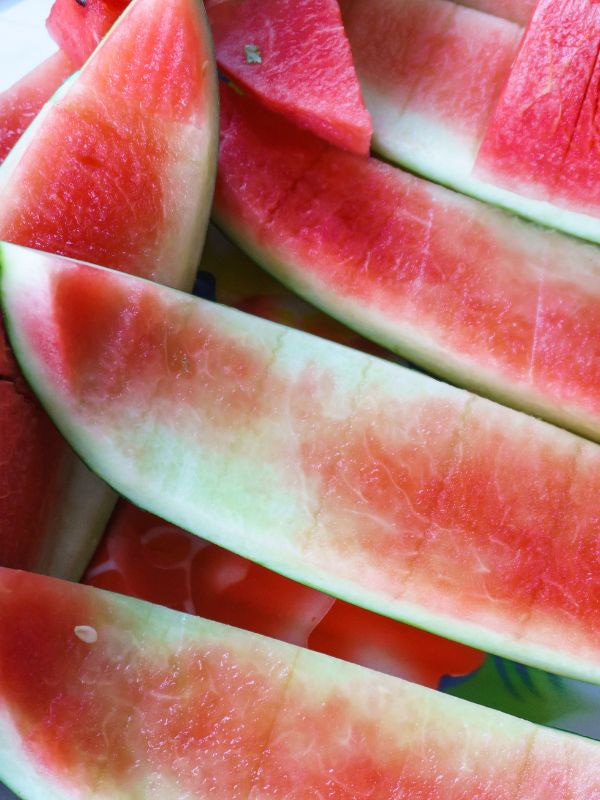
2. Improves Heart Health
Watermelon peels contain citrulline, an amino acid that converts into arginine in the body, improving blood flow and lowering blood pressure.
A study published in the American Journal of Hypertension found that citrulline-rich foods help regulate blood pressure and enhance circulation.
3. Supports Digestive Health
The high fiber content in watermelon peels promotes smooth digestion, prevents constipation, and supports a healthier gut microbiome. Fiber also keeps you full, aiding weight control.

4. Boosts Skin Health
Watermelon peels are rich in vitamin C and antioxidants that fight free radicals, slow down skin aging, and reduce inflammation. Topical use can soothe sunburns, hydrate dry skin, and give you a natural glow.
5. Enhances Post-Workout Recovery
Citrulline in watermelon peels helps reduce muscle fatigue and soreness, making it an ideal natural post-workout recovery aid. Athletes benefit from its ability to improve blood circulation and muscle repair.

6. Aids Weight Management
Being low in calories and high in water content, watermelon peels are ideal for weight-conscious individuals. They help curb hunger while providing essential nutrients.
7. Boosts Immunity
Watermelon peels contain vitamin C and other antioxidants that strengthen the immune system, helping the body fight common colds and infections naturally.

8. Natural Detoxification
The hydrating and antioxidant properties in watermelon peels support the body’s natural detox process, flushing out toxins and improving overall health.
9. Hydration Support
Watermelon peels are nearly 92% water, making them an excellent hydrating food that combats heat and dehydration, especially in summer.
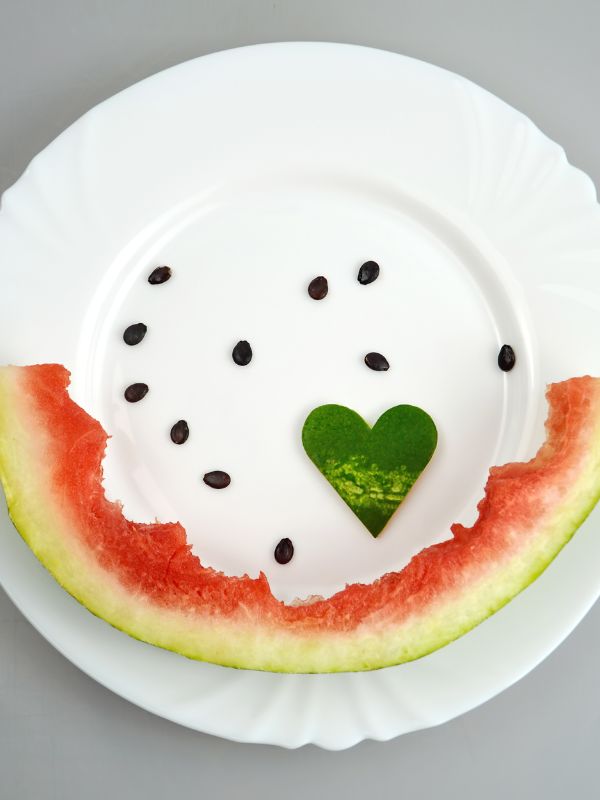
Environmental Benefits: Watermelon Peels in the Garden
1. Composting Watermelon Peels
Watermelon peels are rich in nitrogen, which balances carbon-heavy materials like leaves or straw in your compost pile. They decompose quickly, producing nutrient-dense compost for your plants.
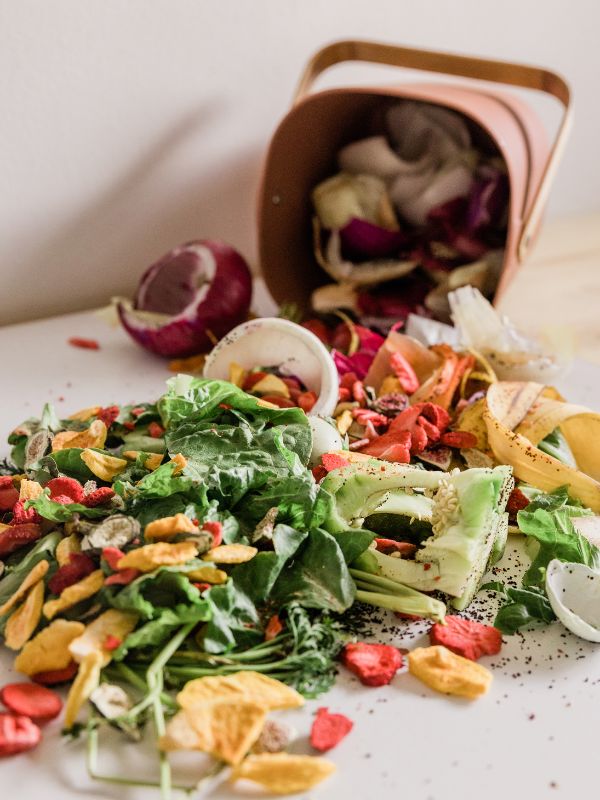
2. Watermelon Peel Mulch
Use watermelon peels as mulch around moisture-loving plants like cucumbers or melons. They help retain soil moisture, prevent weeds, and enrich the soil as they break down.
3. Natural Fertilizer
The water left from boiling watermelon peels contains beneficial minerals. Dilute it with fresh water (1:2 ratio) and use it to water your plants for a natural nutrient boost.
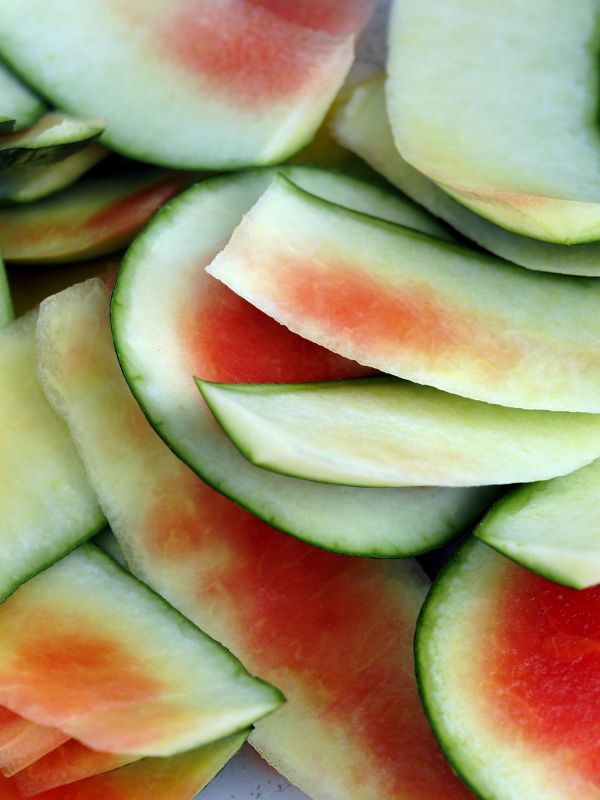
4. Pest Repellent
Watermelon peels can act as a natural pest deterrent. Place small pieces of peel around plants to attract aphids or ants. Once they gather, remove the peels and dispose of them away from your garden.
Practical Ways to Use Watermelon Peels
1. Watermelon Peel Stir-Fry
Turn watermelon peels into a savory, healthy side dish.
Ingredients:
- White part of watermelon peel (thinly sliced)
- 1 onion, sliced
- 2 cloves garlic, minced
- 1–2 tbsp soy sauce
- 1 tsp oil
- Salt, pepper, and chili flakes to taste
Instructions:
First, remove the green skin and slice the white part thinly. Then, heat oil in a pan and sauté garlic and onions until fragrant.
Next, add the peels and season them with soy sauce, salt, and chili flakes. Finally, stir-fry for 5–7 minutes until tender, and serve hot.

2. Watermelon Peel Pickles
Crunchy, tangy, and perfect for snacks or side dishes.
Ingredients:
- White watermelon peels (cut into strips)
- 1 cup apple cider vinegar
- ½ cup sugar
- 1 tbsp salt
- 1 tsp mustard seeds
- 1 cup water
Instructions:
Begin by bringing vinegar, sugar, salt, mustard seeds, and water to a boil in a pot. Afterward, add the peels and simmer them for 5 minutes.
Once done, allow the mixture to cool fully. Lastly, pour it into jars and store in the refrigerator for a minimum of 24 hours before enjoying.
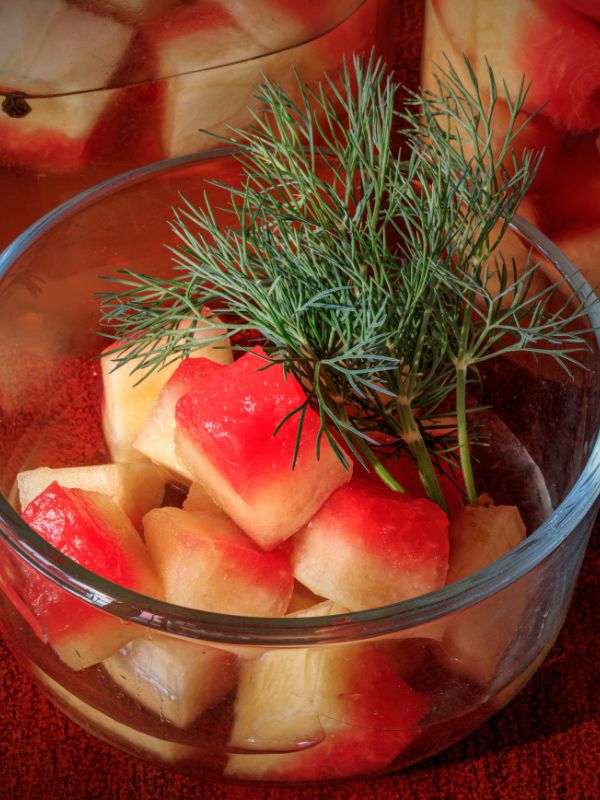
3. Garden Compost or Mulch
Compost:
You only chop peels into small pieces and mix them into your compost bin. Their nitrogen content speeds up decomposition, enriching the soil.
Mulch:
You can spread thin strips of peels around plants to retain moisture, suppress weeds, and add nutrients as they break down.
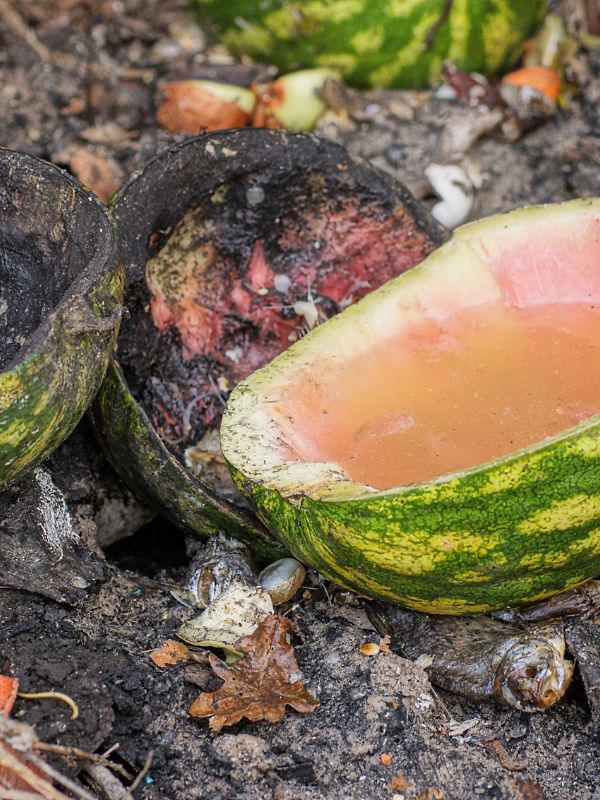
4. DIY Cooling Face Mask
Watermelon peels can naturally soothe sunburned or inflamed skin. First, you grate or blend watermelon peels into a smooth paste.
Next, gently apply the paste to the affected skin and leave it on for 10–15 minutes. Finally, you just need to rinse it off with cool water to enjoy refreshed and hydrated skin.
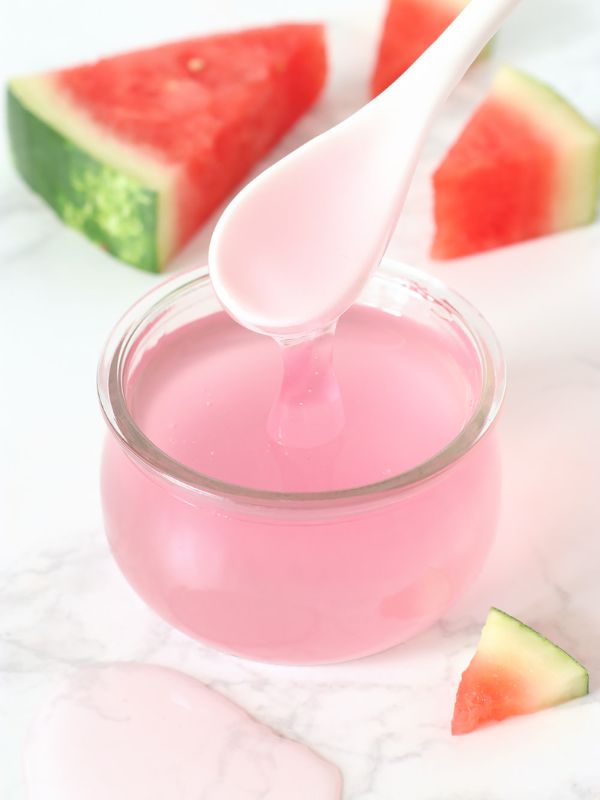
Cautions and Precautions
Watermelon skins can carry pesticide residues. Always wash the fruit thoroughly or choose organic varieties when using the peel.
Overconsumption of watermelon peels may cause bloating or digestive discomfort due to their high fiber content. Start with small amounts and monitor how your body reacts.
Some individuals may experience allergic reactions. Perform a patch test before applying the peel to your skin.
For individuals with chronic kidney disease or high potassium sensitivity, consult a healthcare provider before consuming watermelon peels, as they can affect potassium levels.
Disclaimer
This article is for informational purposes only and is not a substitute for professional medical, nutritional, or gardening advice.
Consult a healthcare provider before using watermelon peels, especially if you have allergies, digestive conditions, or other health concerns.
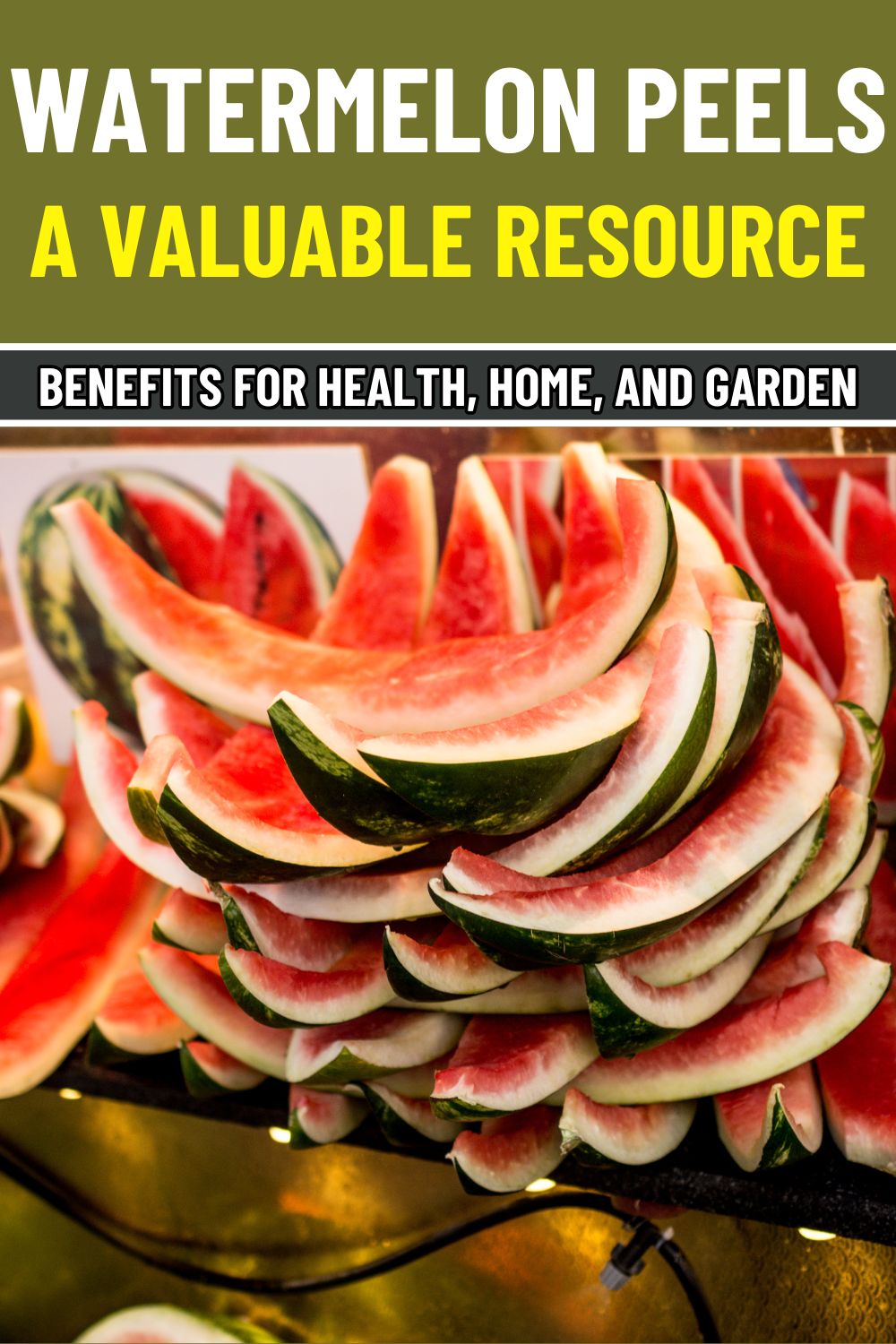
Watermelon Peels: Hidden Benefits for Health, Home, and Garden You Need to Know
